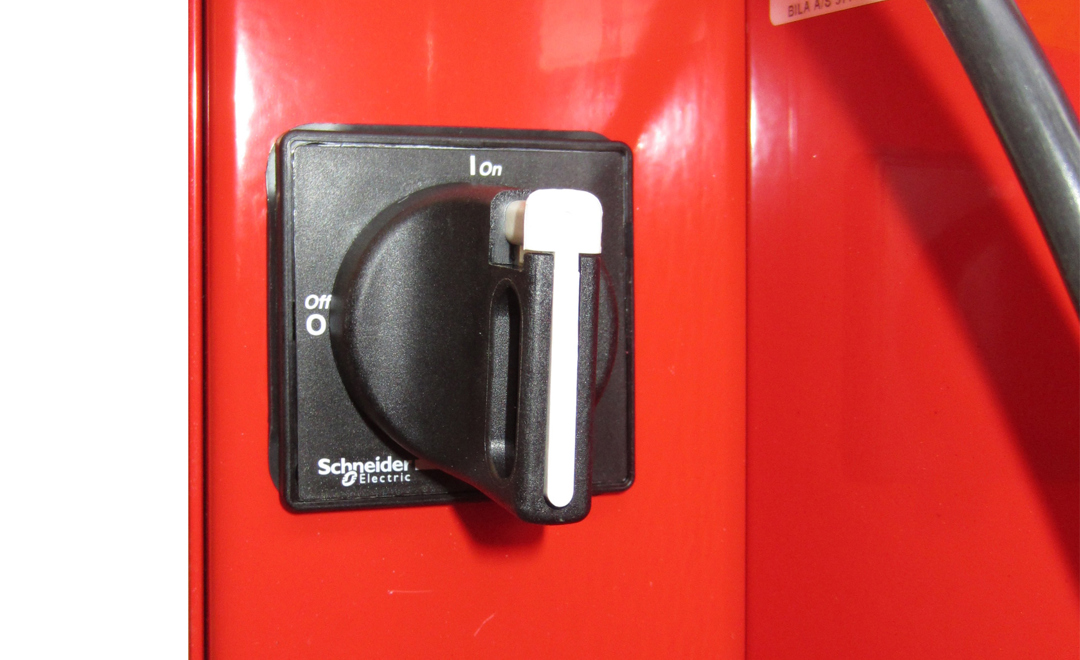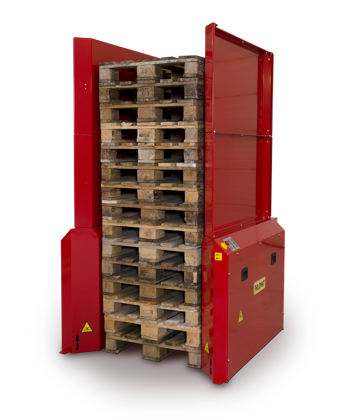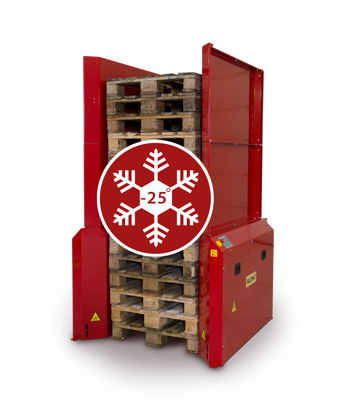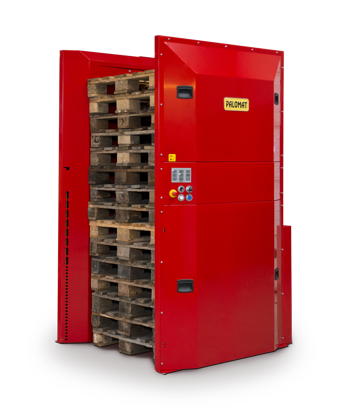PALOMAT® Double Up
Choose PALOMAT® Double Up if you plan to stack and destack 1+1 pallets together in a line and prefer to use electricity as the power source.

AC operated
Plug´n`Play

Handels
1 x 1 pallets at a time

Lifting capacity
2 x 15 pallets/ 2 x 500kg

24/7-365
Technical support
How PALOMAT® Double Up works
PALOMAT® Double Up is designed for automatic pallet stacking and destacking. It can stack 1+1 empty pallets two in a line . You insert or remove the pallets using a stacking truck or forklift truck. All pallet handling takes place at floor level. PALOMAT® Double Up detects the pallets via photo sensors, after which the pallets are automatically stacked or destacked 1+1 pallets in line with each other.
- It operates solely on electrical 230V power and can therefore be placed anywhere - as long as there is a 230V power outlet nearby
- When destacking, two stacks with a maximum of 15 pallets in each stack are inserted into the PALOMAT®. The pallets are automatically destacked 1+1 pallets in line with each other
- When stacking, two stacks with a maximum of 15 pallets in each stack are inserted into the PALOMAT®. The pallets are automatically stacked 1+1 pallets in line with each other.
- Palomat® Double Up operates fully automatically. It is ONLY manually operated via the touch panel when switching between stacking and destacking
Please note that the PALOMAT® Double Up only handles 1+1 pallets two in a line, not individual pallets. This applies to both stacking and destacking. Pls. do also note that the safety frame for the PALOMAT® Double Up is required.

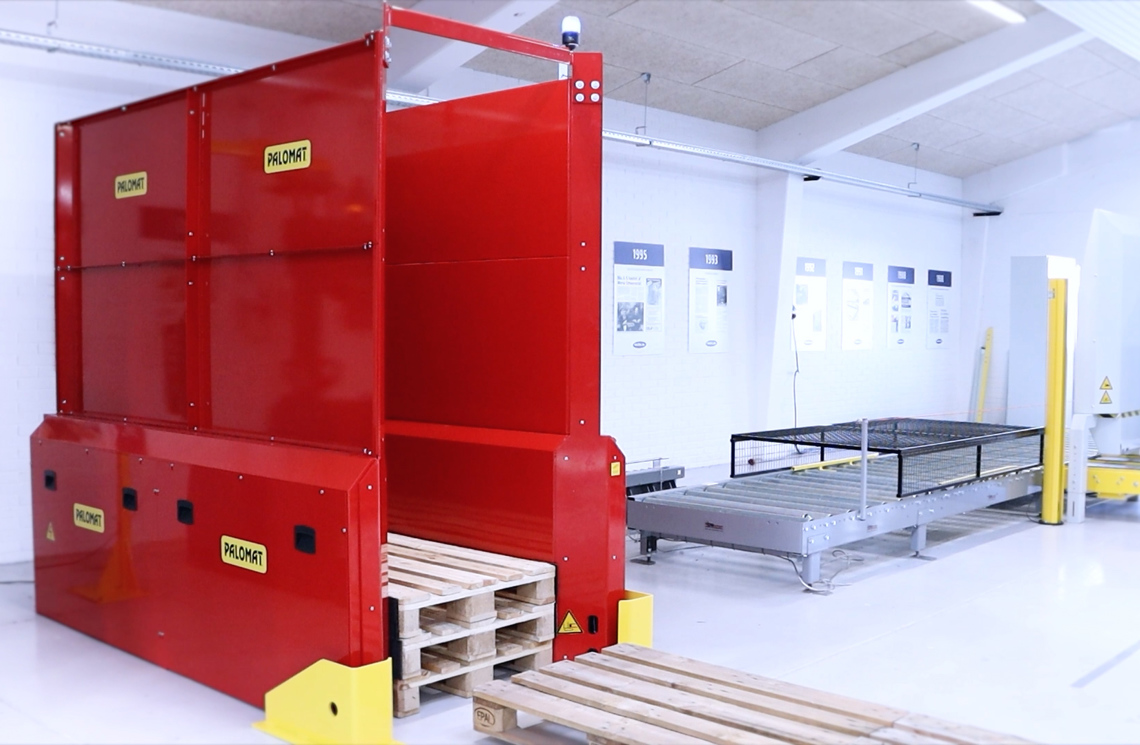
Specifications
-
Capacity 2 x 500 kg Energy 220-240V AC / 50 Hz Standby consumption 23 W Consumption during operation 1000 W (at max. load of 2x500 kg) Noise level 70db(A) Max. fuse 16A D01 Steering Siemens S7-1200 Standard colours:
RAL 3002 red, RAL 5002 blue, RAL 7032 grey and RAL 7035 grey.
As the PALOMAT® is equipped with various sensors, wires and pipes, cleaning must only be carried out with a weak alkaline cleaning agent. The PALOMAT® must not be flushed, but only wiped with a damp cloth.
-
PALOMAT® Double Up for 2 x 15 pallets
Article no. Pallet size Lifting capacity Number og pallets 152501 2x1200x800x144 2x500 kg 2x15 pallets Incl. safety frame for 2x15 pallets, top bar, light tower incl. maximum indicator and truck protection.
-
-
Possible options for your PALOMAT® Double Up
Other models
Contact us
We are ready to answer your
questions and have a conversation
about the possibilities for optimizing
your pallet flow.
Send us a message or call us at +45 9669 4710






